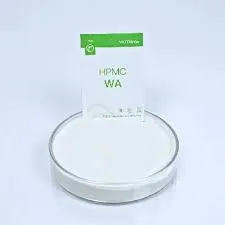
Лип . 22, 2024 01:51 Back to list
Comparison of HEC and HPMC in Various Applications and Their Performance Outcomes
Comparisons Between HEC and HPMC Understanding Their Properties and Applications
Hydroxyethyl cellulose (HEC) and hydroxypropyl methylcellulose (HPMC) are two widely used cellulose derivatives in various industries, particularly in pharmaceuticals, food, cosmetics, and construction. While both of these compounds share some common attributes, they also exhibit distinctive properties that make them suitable for different applications. This article will explore the characteristics of HEC and HPMC, their differences, and how their unique properties cater to specific industrial needs.
Chemical Structure and Properties
HEC is a non-ionic, water-soluble polymer produced by the reaction of ethylene oxide with cellulose. It is primarily known for its thickening, binding, and film-forming properties. As a white to off-white powder, HEC is soluble in cold and hot water, forming a clear solution. Its viscosity can be influenced by factors such as concentration, temperature, and shear rate.
On the other hand, HPMC is synthesized through the reaction of propylene oxide and methyl chloride with cellulose. HPMC is also a non-ionic, water-soluble polymer, but it is characterized by a different degree of substitution compared to HEC, which affects its solubility and viscosity. HPMC can dissolve in both cold and hot water, producing a transparent or slightly opaque solution. This feature enhances its versatility in various formulations, particularly in the pharmaceutical industry.
Differences in Properties
One of the key differences between HEC and HPMC lies in their viscosity profiles. HPMC tends to exhibit a broader range of viscosities compared to HEC, making it more adaptable for specific formulations. HPMC can be tailored for both low and high viscosity applications, whereas HEC typically presents limited viscosity range options. This distinction makes HPMC more suitable for products requiring specific rheological properties, such as controlled-release formulations in pharmaceuticals.
hec vs hpmc

Another notable difference is their thermal and chemical stability. HEC is known to be relatively stable, but HPMC offers better thermal resistance, which is advantageous when used in high-temperature processing applications. Moreover, HPMC has superior gel-forming ability, making it ideal for applications that require a controlled gelation process, such as in food products and pharmaceuticals.
Applications
Both HEC and HPMC find extensive applications in various industries due to their thickening and stabilizing properties. In the pharmaceutical industry, HEC is commonly used as a binding agent in tablet formulations and as a thickener in liquid formulations. Its stability and non-toxic nature make it a popular choice for drug delivery systems.
In contrast, HPMC's versatility allows for broader applications. It is widely used as a thickening agent in cosmetics and personal care products, providing a smooth, creamy texture. Additionally, HPMC plays a crucial role in the food industry, where it acts as a stabilizer and emulsifier in products like sauces and dressings. Its ability to form gels also makes it suitable for gluten-free baking products as a substitute for wheat gluten.
Conclusion
In summary, while both HEC and HPMC serve as valuable cellulose derivatives in numerous industries, their unique properties and applications set them apart. HEC is often preferred for its straightforward thickening capabilities, while HPMC's versatility and adaptability make it ideal for more diverse formulations. Understanding the differences between these two compounds is essential for formulators and manufacturers aiming to leverage the specific advantages of HEC and HPMC in their respective products.
-
Versatile Hpmc Uses in Different Industries
NewsJun.19,2025
-
Redispersible Powder's Role in Enhancing Durability of Construction Products
NewsJun.19,2025
-
Hydroxyethyl Cellulose Applications Driving Green Industrial Processes
NewsJun.19,2025
-
Exploring Different Redispersible Polymer Powder
NewsJun.19,2025
-
Choosing the Right Mortar Bonding Agent
NewsJun.19,2025
-
Applications and Significance of China Hpmc in Modern Industries
NewsJun.19,2025







